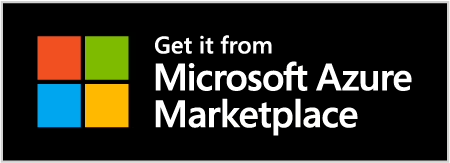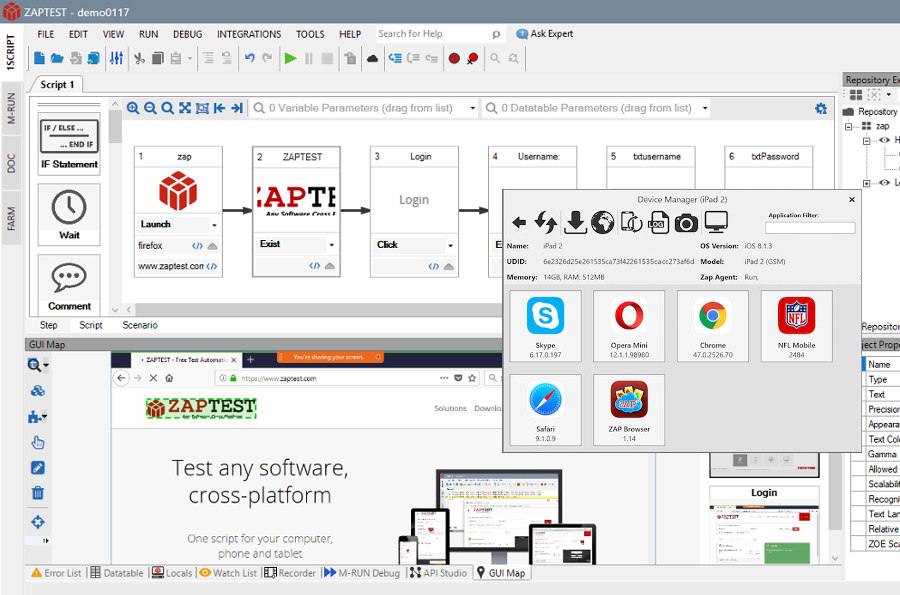Robotic Process Automation in HR has streamlined operations, driven efficiency, and reduced costs in human resource operations. Additionally, as organizations have embraced the digital workforce, HR automation has provided solutions to a range of problems raised by remote work, such as bridging legacy systems, improving data transfer, and increasing cybersecurity.
RPA in HR helps automate a wide range of repetitive tasks and allows HR professionals to provide value-driven, human-focused work that makes an impact on job satisfaction and, as a result, employer reputation and employee retention.
This article will explore RPA human resources use cases, case studies, benefits, challenges, and the trends that will shape the future of HR automation.
RPA for HR market size
Exact figures for Robotic Process Automation in the Human Resources sector are difficult to find. The global HR technology market size is valued at around $40 billion in 2023, with a predicted annual growth rate of 9.2%.
RPA implementation, alongside AI/ML tools, is seen as a huge driver within the HR technology sphere. McKinsey suggests about 25% of capital spending over the next five years will be on automation tools, which roughly suggests the upper end of spending on RPA technologies and services could reach as much as $10 billion in the near future.
Benefits of RPA in HR
There are several compelling reasons for the adoption of RPA technologies within the Human Resources sector. Here are some of the key reasons why HR teams should adopt RPA.
#1. Increased productivity
Within HR, hire-to-retire refers to the entire employee lifecycle, from recruitment to onboarding to performance management right up to the point of retirement. In other words, all the interactions that an HR professional will have with a single staff member.
McKinsey suggests that well over 50% of these tasks are suitable for automation with RPA. However, once you add Cognitive AI technologies, the number of tasks that you can automate grows significantly.
As any HR professional will tell you, their daily tasks involve a lot of repetitive, rule-based processes, like background checks, payroll adjustments, holiday authorization, performance management, resume screening, onboarding, and more. RPA can handle these tasks and free up HR teams and allow them to put the human back into human resources.
#2. More efficient talent acquisition
Talent acquisition (TA) has been a major topic within the last few years. COVID-19 caused major disruptions, and even when things returned to normal, labor participation was lower. When you add shifts in job demands due to increased digitization, the gradual retirement of the baby boomer generation, and the ever-present STEM skill shortages, you have a situation where employers are struggling to fill jobs.
RPA can help recruitment teams in several different ways. These tools can automate posting job ads, sifting resumes, scheduling interviews, and communicating with candidates. By streamlining the acquisition process, HR professionals have more time to focus on interviews, leading to a more efficient pipeline.
Another thing to consider is that RPA tools can also plug many of the gaps created by talent acquisition difficulties. These tools can alleviate some of the pressure and allow teams to stay operational despite a shrinking pool of available talent.
#3. Increased accuracy
Human resources, like most other sectors and departments over the last few years, have gone digital. Communication, records, and employee data are stored digitally, quite often across different applications, spreadsheets, databases, and employee portals.
With so much data going back and forth, the risk of human error has increased. The consequence of these errors could be anything from a minor inconvenience to more serious matters like work permit delays, inaccurate payments, or missing out on new hires. Enterprise RPA tools help solve these issues by eliminating human error from automated processes.
#4. Reduce employee churn
Hiring employees is difficult and expensive, so you want to make sure they stick around long enough to hit peak productivity and repay your investment. Unfortunately, employee retention is a big struggle for many firms, with the overall shortage of professionals distorting the market and leading to increased employee churn.
The other thing to consider is that post-COVID, people’s ideas about work have changed. Staff want a better work-life balance, remote or hybrid options, and technology that makes their life easier. RPA tools can assist in all these areas and increase job satisfaction for employees. Holding on to your HR team means you can do a better job of retaining and acquiring employees.
#5. Reduce costs
One of the most compelling reasons to invest in RPA is cost savings. Budget cuts and an uncertain economic outlook have forced the C-Suite to consider ways to do more with less. RPA can help in several ways. For example, it can help you reduce headcount by automating HR tasks.
Secondly, RPA can help companies scale by augmenting their existing staff and helping them become more productive without adding new employees.
Thirdly, RPA is adept at bridging the gap between legacy software and new tools, allowing teams to reduce the costs of investing in new tools when they have perfectly good but dated software to do the job.
#6. Scalability
Another major benefit that using RPA for HR unlocks is the ability to scale. Sudden upturns in business can be a huge headache for HR teams as they struggle to manage new hires. However, enterprise software testing automation tools and RPA solutions can grow with you, meaning new business doesn’t mean more strain on your HR team.
RPA in HR use cases
RPA use cases in Human Resources help with recruitment, training, onboarding, attendance management, performance management, and more.
To highlight a few of the best use cases of RPA in HR, let’s take a look at the employee lifecycle process from hiring to retirement and see how RPA helps with each stage.
#1. Recruitment automation
HR and talent acquisition (TA) teams face a lot of work sourcing, scoring, and communicating with potential hires. RPA can be held in various areas of the recruitment process.
Posting ads:
Once a hiring manager sets out the need for a new employee and sends job details and requirements, they can use RPA tools to automate job posting across a variety of websites. With so many different sites available, this is a classic, time-consuming, step-driven task that can save HR teams a lot of time.
Sifting candidates:
Automation is already in use across the industry in the form of an Applicant Tracking System (ATS) that sifts resumes based on the presence of predefined keywords.
Interview selection:
Once resumes are sifted, HR staff can look at the best candidates and select them for interview. RPA tools can automate offers and send candidate interview slots. What’s more, you can also send unsuccessful candidates automated rejection letters.
Sending offer letters:
There is a lot of administration involved in sending the right candidate and offer letter. These letters must be personalized and in compliance with both company and legal regulations. RPA bots are a great choice for synthesizing these regulations and ensuring your offer letters are up to par.
What’s more, the technology can also be adapted to track applicant replies and send hiring managers updates by email.
#2. Onboarding automation
Once you’ve found new employees, your work is just beginning. A successful onboarding experience is one of the biggest predictors of employee retention, so it’s something you need to get right.
As more teams embrace remote and hybrid work, it’s easy for new hires to fall through the cracks. If you want new hires to hit the ground running, automating elements of the onboarding process is the solution. Here are a few areas where RPA can help HR teams.
Background checks:
Background checks can be automated by showing RPA bots how to send and collect information from the appropriate portals. RPA bots can help with checking employment history, qualifications, and criminal background checks.
Employee details:
New employees must be added to HR systems. RPA systems can replace data entry by extracting pertinent information from documents and transferring them to the appropriate system.
Document requests:
RPA tools can automate the request and uploading of various employee documents, such as identification, tax documents, degrees, references, and so on.
Account credentialing:
New employees need logins for company software, machines, and any relevant portals. RPA tools can both prepare and communicate these accounts.
Learning and development:
Learning and development materials, and information like your company handbook, should be sent to your employees to help them get up to speed. RPA tools can help both deliver and track interactions with this material, ensuring your employees are ready to get productive.
#3. Employee data management
Once your new hires are bedded in, there are a range of tasks that need to be done. RPA can help streamline many of these jobs.
Travel and expense reports:
Travel and expense reports are another manual task that often falls between HR and finance. Tracking these costs is important so companies can have up-to-date accounts and so employees can be reimbursed for any spending.
Optical Character Recognition (OCR) software can be employed alongside RPA tools to read and process receipts, check them against company travel and expense rules, and either authorize or escalate the information, leading to smooth, quicker processing.
Leave management:
Requesting holidays and days off via email can easily be handled by RPA tools. Using OCR software, they can turn the unstructured data into a request and handle approval or rejection emails, too.
Performance management:
Performance management is a part of any healthy organization. HR teams need to compile a lot of data to provide accurate assessments, and RPA tools are perfect for the job of collecting data from various databases, spreadsheets, and other information sources and centralizing it for performance management reviews.
Payroll:
While payroll is processed by the accounting team, it’s in collaboration with HR. There is a lot of data entry and manual information processing involved, such as managing holiday pay, deductions, overtime, contracts, and so on.
RPA can automate the communication between HR and payroll and ensure crucial details and documents are spared, leading to timely and accurate payroll and satisfied employees.
Compliance:
Regulations are in a constant state of flux, leaving HR teams struggling to keep up. When labor laws change, RPA bots can be implemented to update company documentation, employee data, and reports with speed and accuracy.
#4. Exit management
Exit management is essentially the other side of onboarding, where HR teams manage the smooth outgoing of an employee due to retirement, termination, or moving on to pastures new. There is a lot of administration involved in the process, including sending letters, removing IT credentials, and even organizing exit interviews or surveys.
Other areas that RPA tools can automate are requests and recording of the return on company assets, invalidating company access cards, notifying line managers, and generating exit documents.
As you can see, RPA can help HR teams automate tasks across the entire employee lifecycle.
RPA HR department case studies
Case study #1. Robotic Process Automation for HR & Payroll
Our first RPA in HR case study shows the benefits of automating the payroll process for HR teams. The client was a UK-based recruitment services business that was struggling to manage employee leave and other absences.
Staff used a web portal to apply for time off and report sick days. However, the HR team was still using an offline HR software system to perform payroll calculations that needed to be adjusted based on absence. This process was monthly, time-consuming and subject to human error.
The business performed an audit of its existing IT system and payroll software and identified a methodology for integrating these systems. The solution would both prepare and automate communication for both the employee and the HR team to confirm amendments due to absence.
Next, a trial payroll is run by the end of the month, with a requirement for approval from an HR specialist. Pending approval, the bot raises a document with salaries that are adjusted for days of insurance contributions, bonuses, etc., and sends it to the electronic banking system.
The result was that time spent on these tasks was reduced by 920% per month, payroll errors were reduced, and the ROI of the project was over 10%.
Case study #2: Robotic Process Automation for HR operations
Using RPA in HR operations is a surefire way to improve greater efficiency. In one case study, a huge offshore outsourcing firm that employed over 200,000 staff members was hit with high staff turnover and all the attendant problems that brings. Employee data was held in different systems, and the process of starting or leaving was hugely inefficient.
One of the biggest problems the organization faced was that different departments owned or were responsible for different tasks. The various duties of on and offboarding employees were split between HR, Facilities, and IT.
Each team worked independently. Therefore, handoffs needed to be coordinated and often caused lengthy delays and frustration for employees. One of the consistent hold-ups involved teams sharing information in the form of unstructured data that required manual reentry into different systems, which was both time-consuming and prone to error.
The company solved these inefficiencies by creating an end-to-end solution that was capable of orchestrating each department. They created a web portal to allow teams to commit data to a centralized system, which reduced the wait times between departments by allowing inputs simultaneously or in sequence.
From there, the business processes were handled step-by-step, with each team prompted by email about what was required. The upshot was a far quicker offboarding that provided better company security and saved losses of company assets.
The business reduced processing time by 90%, improved security, and boosted employee satisfaction.
Case study #3: Robotic Process Automation for HR operations
A multinational company that provides business consulting, IT, and outsourcing services across 50 countries for over 1000 clients was faced with a big challenge. The organization’s size and scope were so large that its Human Resource Outsourcing (HRO) services were responsible for a lot of different processes. Some of these tasks included talent acquisition, employee administration, learning and development, employee benefits, job satisfaction, and more.
The main issue was that each of these areas required extensive management and no shortage of manual tasks and complex coordination. To make things worse, many of their clients were growing rapidly, which meant the firm needed to scale with them. Failure to do so would cause bottlenecks that would decrease employee satisfaction.
An audit with an RPA vendor revealed several processes that were strong candidates for automation, including synchronizing data between various applications and the business ERP system, data extraction from emails, and data standardization.
The business automated several processes, including shift allowance calculation, generating offer letters for new employees, background checks, training program schedules, and various off-boarding processes.
The results included a 70% reduction in manual tasks, a 55% improvement in processing time, and a net saving of almost $700,000 dollars.
Robotic Process Automation for HR challenges
While adopting RPA for HR processes saves time, money, and effort, there are some complexities that businesses must overcome for successful adoption. Here are some of the main issues that affect RPA and HR implementation within the workforce.
#1. Technical skills
Moving from traditional workplace setups to a digital environment with RPA requires some consideration. RPA is far quicker to implement than many new software tools. However, that’s not to say there are no growing pains.
Indeed, transformation must be carefully planned with requirements and process discovery essential steps. In the best-case scenario, HR teams would feel confident to build their own process automation based on their personalized workflows.
ZAPTEST Enterprise users get the advantage of a ZAP Expert as part of their annual subscription. These trained and qualified ZAP experts provide dedicated support during process discovery and throughout the entire lifetime of the product. Expert support can help teams wring the most from their deployment thanks to their knowledge and experience. They can also provide training and demonstration on how to build process automation and offer maintenance to ensure maximum uptime.
#2. Departmental communication
HR sits at the heart of an organization and involves communication with a wide range of departments and teams. As such, any RPA implementation will need to draw information from different departments like finance, legal, IT, and more.
Any deployment will require interconnecting software applications and systems to make the most of data sharing. It will also need coordination between departments and buy-in from stakeholders.
#3. Resistance to change
Automation technologies and, in particular, AI have the potential to cause widespread disruption across the workforce. HR departments are not immune to these changes, which could lead to resistance from some employees.
Dealing with the adjustment will require a mix of transparency, education, and trial and error. Some roles may be phased out by RPA tools; however, other opportunities will emerge. Reskilling HR staff will help them stay relevant in the age of the digital workplace.
Overall, the use of automation within the human resources space will allow HR professionals to spend less time on rote tasks and more time on human-focused activities. That could come in many forms, like supporting new hires to settle in, improving job satisfaction through regular check-ins, or even helping with learning and development.
RPA in HR trends
RPA is an exciting space with the flexibility to evolve and meet the demands of businesses. Here are some of the trends that are shaping RPA technology in the HR sector.
#1. Employee satisfaction
RPA is well-known for its ability to increase employee satisfaction. Much of the coverage around this issue involves automating mundane tasks and allowing operatives to concentrate on more engaging and interesting jobs.
However, as pointed out by Deloitte, automating payroll, onboarding, and performance reviews can also lead to higher satisfaction. They expect that firms will continue to invest in RPA tools to improve employee communication and allow HR staff to devise and deliver better strategies for employee happiness and retention.
#2. RPA can fill the HR productivity gap
As pointed out by research from The Hackett Group, HR workloads increased by 10% this year while headcount budgets stayed flat. The result is a productivity gap of 10% and an efficiency gap of 10%.
Doing more with less is one of RPA’s most compelling benefits. The technology can automate a lot of repetitive tasks and make up the productivity and efficiency gaps, while augmentation with Intelligent Automation allows HR teams to automate more complex tasks.
#3. Digital workforce engagement
The digital workforce — a location-agnostic, always-connected ecosystem of devices, applications, and data — has become a reality in recent years. Digital transformation was accelerated by COVID-19, leading to an increase in hybrid and remote-first teams. However, in recent times, companies have been calling employees back to the office, much to their horror.
Gallup polls suggest that 9 in 10 workers prefer remote or hybrid work. However, research from Microsoft suggests that working from home can lead to reduced collaboration and connectedness. RPA tools, alongside workforce orchestration solutions, can act as the glue that keeps workers connected and collaborating, reducing the need for in-office work.
RPA in HR: What does the future hold?
The RPA and HR applications of the future hinge on the augmentation of RPA tools with AI. Here are some of the more exciting future possibilities.
1. Automated recruitment
Automation in the recruitment space is about far more than saving time. In the future, it will also be used to make decisions on hiring the right people. With sufficient data, Machine Learning tools could synthesize job experience, qualifications, psychological information, and interview questions to choose the perfect candidates.
What’s more, these tools could also make decisions and recommendations free from human bias. AI is not quite at the point just yet and still has baked-in biases that must be ironed out. However, with the right training or safeguards, Cognitive RPA could result in a fairer workplace.
2. Industry 4.0
Industry 4.0 refers to the notion of the Fourth Industrial Revolution. It is the coming together of analytics, automation, human-machine interaction, and advanced manufacturing.
In the research paper, A Structured Approach to Implementing Robotic Process Automation in HR (Balasundaram, 2020), the authors observe that “ensuring consistency in people processes and driving value through talent has eluded HR.”
The paper argues that this technological disruption will create new opportunities for HR teams to achieve cost savings, extra efficiency, and a greater level of service for clients. The authors suggest that “driving value through talent” can be achieved through a range of automation technologies, including RPA, AI/ML, intelligent process automation, and more.
3. Customized HR software by citizen developers
One trend that is taking off now but will become much more widespread in the future is the use of highly customized software that is built by HR professionals. Thanks to the rise of low-code and no-code tools, citizen developers can make HR software that meets their unique needs. Instead of hoping that off-the-shelf software meets their requirements, HR teams can build RPA tools based on their requirements, workflows, and company culture.
As these custom tools’ capabilities are extended with AI and ML, software test automation will play a key role in ensuring these HR tools are reliable and functional.
Final thoughts
There are endless applications of Robotic Process Automation in HR. The profession is awash with repetitive, rule-based tasks that are excellent candidates for automation. With the addition of Intelligent Automation tools, the scope of RPA in HR will only increase.
RPA-human resources software will shape the future of business by helping teams get the most from the workers, embrace the digital workforce, and turn human capital into a strategic advantage.










